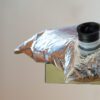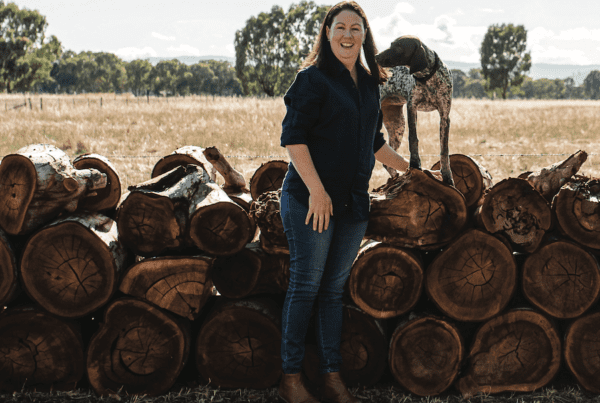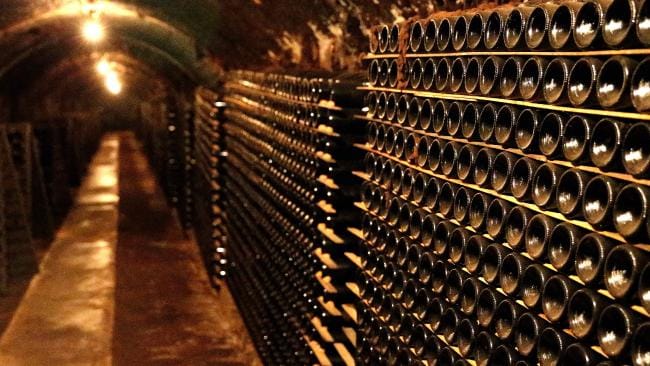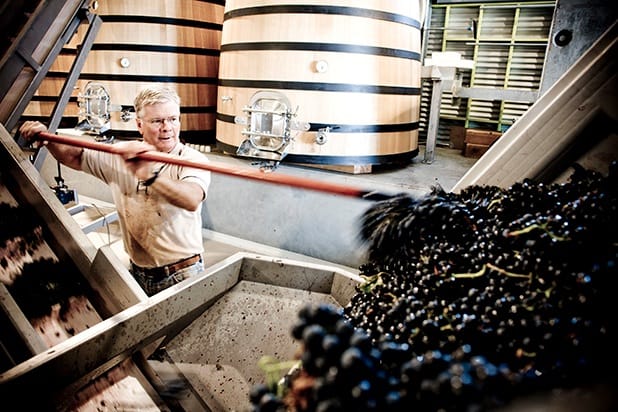
Articles on alternative varieties are usually centred on one variety at a time, and how that variety is faring here in Australia. However from time to time, after having reported on a particular variety, one comes across a standout wine that is an excellent example of what that variety is capable of achieving here in Australia.
So we will start our whirlwind global alternative tour with the Iberian Peninsula, which incorporates Spain and Portugal and is an area that has some great native varieties. Cirami Estate 2015 Riverland Albarino is not quite as austere as the Spanish originals but has lovely flavours and great length that make it an excellent aperitif. Verdejo is another Spanish cracker white variety that has a great future here, especially with wines such as Cirami Estate 2015 Riverland Verdejo, which has great citrus characters and hints of olives on the palate. Bravisimo.
The Portuguese contribution is Verdelho, which has been in Australia since the 1980s, but has only this century started to receive the focus and TLC (tender-loving care) that it needs to show at its best as a dry white wine. In Portugal, and especially on the island of Madeira, most Verdelho is used in making sweet and fortified wines. Bremerton 2015 Langhorne Creek Molly & Merle Verdelho is an absolute beauty with oodles of citrus characters along with hints of honey dew melons and plenty of crisp acidity, to make it a great food wine.
In the Iberian reds, Tempranillo is the most popular here, with more than 300 wineries growing the variety. I suspect that it won’t be long before it gets moved from being an alternative variety into the mainstream.
One that stood out recently was Handcrafted by Geoff Hardy 2014 Tempranillo. A blend of Adelaide Hills and Limestone Coast fruit, it has alluring flavours and a slightly savoury finish – very moreish.
Portuguese red variety Touriga National has been used mainly for making their famous port, but they also make table wine from it. Here there are about 40 wineries producing it. Those I have tasted so far have been great wines with plenty of interesting flavours, great balance and a lovely, lingering finish, from producers such as 3 Dark Horses, Dell’Uva, 919 Wines as varietals and in blends from S.C. Pannell and Quattro Mano.
Moving eastwards we cross the border into France, home of most of the better-known grape varieties and of much vinous arrogance. The French varieties represented here were Malbec (which they call Cot) and Petit Verdot. Much has been written about Petit Verdot including my article in the March-April 2016 edition of WBM, so I’ll just mention that the newly-released Pirramimma 2013 Ironstone Petit Verdot is a very classy big red wine that needs plenty of time before it struts at its best.
Likewise, much has been written of late about Malbec, as Aussie winemakers are at last making more sophisticated wines such as The Islander Estate 2013 Majestic Plough Malbec from Kangaroo Island and Bremerton 2014 Malbec from Langhorne Creek.
A much rarer and bigger Frenchman is Tannat from the Madiran area where the best wines need 15 to 20 years to become drinkable. Luckily our winemakers use more modern winemaking techniques and so the Aussie Tannats need less time to hit their straps. Wines such as Symphonia 2013 King Valley Tannat, coming from a cool climate, are drinkable much earlier but still develop well, as amply demonstrated by the sample the winery sent, of the 2008 vintage. It is another excellent big wine.
While not grown in Australia as yet, the Swiss native white variety Petit Arvine makes sophisticated wines such as the Italian-made Les Cretes Valle D’aosta 2010 Petit Arvine with apple jam aromas, great palate complexity and a crisp lemony finish. Outstanding. Hopefully somebody in Tasmania or the Adelaide Hills will have a crack at this delicious variety soon.
From Georgia (formerly in the Soviet Union) comes the big red variety Saperavi, which continues to make a great impression with every single Aussie Saperavi I have tasted so far being a great wine.
This time there were four. The Symphonia 2008 King Valley Saperavi was the closest one to the Georgians in style, cool climate, tight, reserved and still needing time to develop; a great food wine. Dell’Uva 2012 Barossa Saperavi, being from a warmer climate, was bigger, more open with hints of chocolate and rearing to go. Cirami Estate features again with 2015 Saperavi, massively coloured, almost black, and being so young it was tight and reserved but showed plenty of promise for a long and tasty life. Finally there was Patritti 2012 Barossa Saperavi, the biggest-bodied Saperavi I have ever tasted, but at the same time smooth and rich. All four are magnificent.
In the far west (California) Zinfandel is king, making a wide array of wine styles from the ubiquitous ‘white Zinfandel’ (a cheap, sweet white/rosé) through to the sheer delight of the 13 different versions made by Ridge Vineyards. Here there are just over 100 wineries growing the variety, with some damn good wines being made such as the Warrabilla 2013 Parola’s Zinfandel, a huge wine that is still incredibly tight and restrained and which needs quite a few more years before it opens up and blossoms to its full magnificence; patience is needed here.
Way down south of the border, there is Chile, which can now claim to be the spiritual home of Carmenere, a gorgeous red grape variety (similar to a big Merlot) that originated in France, but disappeared after the outbreak of phylloxera in the 1890s. There are few Carmenere being made here as yet, but that will change as people come to enjoy such sensational wines as the Dell’Uva 2013 Barossa Carmenere. It is an outstanding wine, as good as any Chilean Carmenere I have tasted: silky smooth, elegant and ever so drinkable.
What alternate variety journey would be complete without a visit to Italy, home of some of the best-known alternative grape varieties. Among their white varieties there is the increasingly popular (in Australia) Fiano. Bremerton 2015 Fiano is a great example of what this variety can achieve here. Likewise the Symphonia 2014 King Valley Arneis is a stunning example of what that Italian white variety has to offer. Ceravolo 2015 Adelaide Hills Cortese is one of only a very few Cortese being made in Australia, but it is a sensational example of this powerful, minerally, cool climate white that is definitely worth seeking out.
In the Italian native reds, probably the best known is Sangiovese. Like most native Italian reds, Sangiovese can have high to searing acidity if the grapes weren’t fully mature when harvested, or grown in a cool climate. To prove that this does not need to be the case, try Dell’Uva 2013 Barossa Sangiovese. It is a cracking wine with masses of bright cherry flavours and crisp but restrained acidity. Delicious.
The Italians also make outstanding Montepulciano and here again there are some Aussies making a great drop from this variety. These include 2014 Hand Crafted by Geoff Hardy from the Limestone Coast and Salena Estate 2012 from the Riverland. Other truly delicious wines from an Italian variety are Cirami Estate 2015 Riverland Lagrein and Hand Crafted by Geoff Hardy 2014 Lagrein. Lagrein is one of my favourite Italian red varieties.
Australian winemakers are masters at creating delightful blended wines, such as our unique Shiraz Cabernet blend. Needless to say there are those doing this successfully with alternative varieties.
A great example of this is Bremerton 2014 Tempranillo Graciano, ever so drinkable and yum. However, if there were a title for ‘Master Blender Bender’, it would surely go to Chester Osborn for his delectable d’Arenberg 2011 The Old Bloke & Three Young Blondes Shiraz Roussane Viognier Marsanne, whose name caused a stir with the political correctness police, and his brilliant but unpronounceably named, d’Arenberg 2011 Athazagoraphobic Cat Sagrantino/Cinsaut blend. Both truly sensational alternative blends.
Our quick whip-around finishes in Australia, where the final variety is actually a complete mystery for the moment. The story is that the CSIRO has developed a new red grape variety, as yet unnamed, with Brown Brothers, which they have planted and just made their first wine from. Called Brown Bros 2014 Project Enigma, the wine has a lush purple colour, a light, fruity nose and is medium bodied, with interesting flavours. After decanting, the wine opened up significantly, indicating that it needs time to develop. It made me think of a cooler climate blend of Tempranillo and older-style Grenache. Given a bit of breathing time, this is a lovely, tasty, elegant mid-weight wine that is very enjoyable to drink, and will continue to develop for quite some time. It is in keeping with the Australian adventurous spirit. Well done, guys.
This has been a small glimpse at some of the exciting wines that adventurous Aussie winemakers are producing from non-traditional varieties. There is almost nowhere else in the world where winemakers are prepared, or able, to experiment, the way they do here. It is this free spirit and sense of adventure that has propelled Australia into being one of the world wine powerhouses in less than a century, whereas most of the other countries took centuries to achieve their status.
Make it a habit to try a variety that you haven’t tasted before, even if you can’t pronounce the name easily. Australian winemakers don’t make any bad wine. So, whatever exotic variety you choose to try would at the very least be a drinkable wine, and at the most, be a brilliantly, enjoyable wine like some of the ones mentioned above. We are the luckiest wine country in the world. But wait, there is more. Or will be soon.
DAN TRAUCKI is a wine journalist and a wine industry consultant specialising in assisting with exports to Asian markets. Email dan@wineassist.com.au









Recent Comments